MNTL and its Role in Shaping our Future
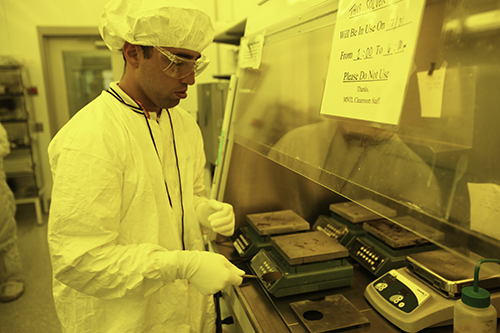 Trainee working on a sample in MNTL's cleanroom (photo courtesy of MNTL).
Trainee working on a sample in MNTL's cleanroom (photo courtesy of MNTL).July 18, 2016
The Micro and Nanotechnology Laboratory (MNTL) at Illinois is one of the largest and most advanced facilities of its kind in the country. Home to 16 cleanrooms, 46 general purpose labs, as well as a biosafety level-2 complex, it is playing a significant role in solving real-world problems and helping bridge the gap between the developing and developed world.
Not only does the MNTL have state-of-the-art equipment and labs, but it is also home to many professors who are working on breakthrough research on a wide range of topics, including optical physics, photonic systems, nanobionics, nanomedicine, lasers, bio-medicine, integrated circuits, renewable energy, and many more.
The building was first opened as a Microelectronics laboratory in 1989; however with funding from the state in 2008, the building was expanded to assist researchers to address the toughest issues facing our society.
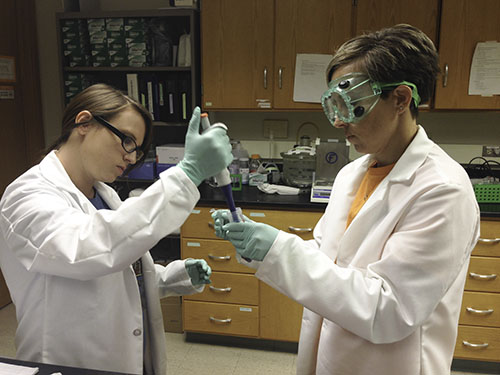 2016 nano@illinois RET teachers Kala Oglesby (left) and Beth Koplinski at work in the lab (photo courtesy of Kala Oglesby).
2016 nano@illinois RET teachers Kala Oglesby (left) and Beth Koplinski at work in the lab (photo courtesy of Kala Oglesby).Nanotechnology has provided enormous breakthroughs in the scientific community, and its benefits can be seen in our everyday lives. It allows us to make materials smaller, sturdier, and more reactive. Its applications can be seen in virtually every field from cosmetics to the automotive industry to the food industry.
For most people, the words cosmetics and food aren’t the first terms they think of when they hear “nanotechnology.” However, nanotechnology today plays a significant role in many parts of the cosmetics industry in products such as shampoos, lotion, sun screen, and make-up. Shampoos, conditioners, and other hair products, for example, use nano emulsions to envelop crucial ingredients from the hair product, allowing them to seep deeper into hair.
Nanotechnology is also very widely used in the food industry. In agriculture, nano sensors are extensively used by farmers to monitor the conditions of their soil and to also detect pathogens that are causing harm to their crops. In the meat packaging industry, Nano sensors allow us to monitor the temperature and moisture of the product.
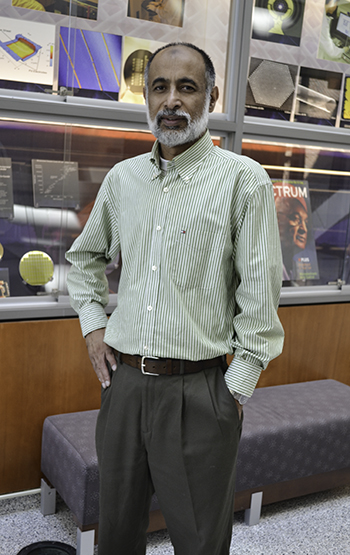
Irfan Ahmad, the Executive Director of the Center for Nanoscale Science and Technology.
Irfan Ahmad, the Executive Director of MNTL's Center for Nanoscale Science and Technology, believes that nanotechnology has the maximum potential to make further profound impacts in the field of medical, pharmaceuticals, food, and environment. Knowing the significant importance that nanotechnology will play in our communities, Ahmad is one of many MNTL professors who are taking action to help spread awareness to the community about the benefits it could have to society and to help recruit the younger generation to pick up an interest in this field and hopefully study and pursue a career in this field. For instance, MNTL offers nano@illinois REU, enabling students from throughout the country to come and learn about nanotechnology. The nano@illinois RET allows educators throughout the country to learn more about nanotechnology and the cleanroom so they can pass on their knowledge to the younger generation in classrooms and enocurage them to explore a career in nanotechnology. Ahmad states,
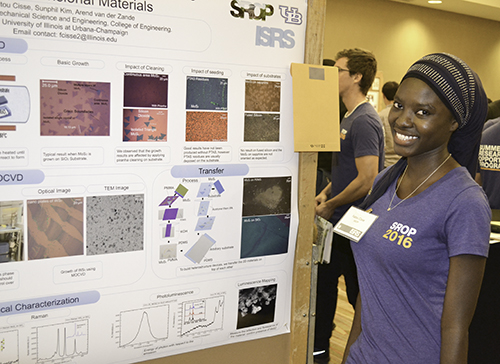 2016 nano@illinois REU participant presents her research at a poster session.
2016 nano@illinois REU participant presents her research at a poster session.“We know that in this country, STEM education and an interest in STEM education has been lagging. A number of NSF studies have shown that, and they have been submitted to the Congress and so forth. So, those of us who manage stuff or who can see the wider picture, can see the utility and value of these programs. The focus is to expose them to nanotechnology as a potential technology, and we have already set the stage in terms of why we pursue this.”
Ahmad also believes that nanotechnology is a great bridge builder between developed and developing nations, because it can help to address global challenges—challenges that can’t be just addressed by a single institution or a single country.
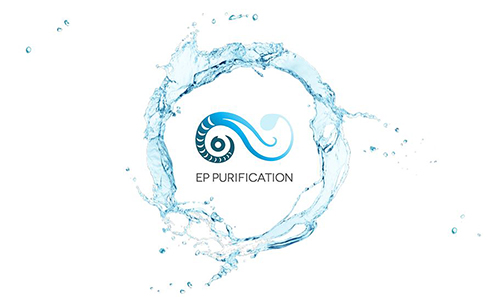 EP Purification (photo courtesy of http://www.ep-pure.com/)
EP Purification (photo courtesy of http://www.ep-pure.com/)Gary Eden, a professor in the Electrical and Computer Engineering department, whose research focuses on electromagnetics and optics, is an excellent example of how nanotechnology has the power to have a profound impact in developing nations. Eden’s research in the cleanroom, along with that of Sung-Jin Park, led to the founding of EP Purification. The work done by their research groups gave way to the work being done at EP Purification, which uses microcavity plasma technology to generate ozone for the disinfection of drinking water and for the treatment of waste water. Ozone is extremely aggressive against pathogens, more so than chlorine, which is what we often use. The EP Purification module takes oxygen from our surroundings and runs it through micro channels on a micro plasma chip, which in turn creates ozone. What makes this product ideal is that it doesn’t leave any footprint, and all its components are recyclable. Most of the shipments have been for cleaning drinking water for individuals throughout the world. These systems are powered by a simple 30 Watt solar panel, which is significant because it allows people who are off the grid to have access to this technology. According to Eden, this product is now available in almost thirty countries and is being used to disinfect water in countries such as India, Singapore, Philippines, and Haiti. By working with NGOs from countries throughout the world, EP Purification looks to keep expanding. Eden states,
“It’s unacceptable that in the 21st century that anyone should drink filthy water. No one should have to do it.” This, according to Eden, served as the motivation to co-found EP Purification.
When asked about the importance of MNTL, not just for the future of our society, but also the University of Illinois, Eden states, “The MNTL is absolutely essential to the university, simply because the possibility of developing processes and devices is endless in the lab. I can’t imagine a campus where we didn’t have this capability. I think we’re just seeing the beginning. It’s impossible to know how to control something if you don’t understand it. So the laboratory and fabrication facilities available to us allow us to restore a world that wasn’t accessible 30 or 40 years ago. When you bring together a lot of smart people who study these phenomena, we will see a lot more ‘aha moments.’” Eden’s praise of this facility indicates how significant the MNTL cleanroom is, and how vital it could be for our future.
Story by Sanjay Kalidindi, photographs by Elizabeth Innes unless stated otherwise.
For more related stories, see: MNTL, Nano@illinois, RET, REU, REU: nano@illinois, Science Center, 2016
For additional I-STEM articles on the MNTL, please see:
- RET Teachers Experience Multidisciplinary Nanotechnology Research via nano@illinois
- 2015 nano@illinois RET Teachers Perform Nanotechnology Research, Make Modules
- The Face of Nanotechnology at Illinois, CNST Promotes Interdisciplinary Collaboration
- B3 Summer Institute Provides Interdisciplinary Training













.jpg)
















